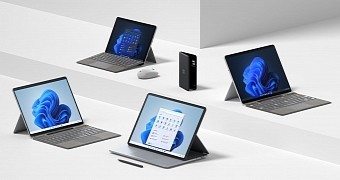Rolling out major new features and updates to everyone at once is great news for users, but on the other hand, it may not be such a good idea from a stability and reliability perspective.
This is because a bug that somehow went unnoticed could potentially hit quite a lot of users, and given the gigantic userbase of Windows, you can easily see where this is going.
This is the reason Microsoft is now using a phased rollout to make sure everything is working just as planned. With the phased approach, the software giant can closely monitor the rollout and therefore make new major releases available only for a limited set of devices.
This means that not all devices are getting the goodies on day one, but on the other hand, it guarantees a more reliable experience when the updates become available.
Whenever Microsoft discovers a bug, it can simply suspend the rollout for a specific set of devices, therefore limiting the damage the glitch can cause.
The software giant is using a similar approach for features as well, and it is called the Controlled Feature Rollout system. Also known as CFR, this system comes in handy not only as part of the Windows Insider program, but also for Microsoft Edge testers, as the software giant can try out new capabilities without releasing them at once to everybody out there.
Once again, the purpose of this system is to reduce the likelihood of major bugs hitting a significant number of devices out there.
“Microsoft will periodically deliver new improvements and experiences to the current in-market version of Windows 11 using the existing Windows monthly update process. Our phased and measured approach will introduce new features using Controlled Feature Rollout (CFR) technology, which is also used in the Windows Insider Program and with Microsoft Edge,” Microsoft explains.
Of course, given Microsoft closely monitors the rollout of new features, and therefore can determine the reliability of its updates, the company can also improve the availability of new capabilities.
In other words, if the collected data doesn’t show any potential sign of issues, Microsoft can safely release the new content to more devices, therefore making an important step towards broad availability.
“Using CFR, features will be gradually rolled out, starting with devices that install the monthly optional non-security preview release. When we've validated that each feature is ready, we'll gradually roll it out to new devices, and eventually include it enabled-by-default in a subsequent monthly security update,” the company explains.
In many ways, the whole thing is already paying off, as the likelihood of hitting major issues when new features are ready has been reduced substantially since the CFR concept has been introduced.
Given it’s used mostly in the Windows Insider program and for Microsoft Edge testers, the Controlled Feature Rollout system has a major contribution to the development of new features in the operating system and the browser. And of course, Microsoft can always expand it to more products in its portfolio, including in Microsoft Office, for instance.
As long as the company can control the rollout of new features more effectively, everybody wins, even though this could lead to some frustration from users who aren’t getting the latest updates on day one. For home users, for instance, this is something that’s rather critical, as receiving an update that eventually breaks down something is never good news. For power users, this is precisely what Microsoft’s Insider programs are for.

 14 DAY TRIAL //
14 DAY TRIAL //